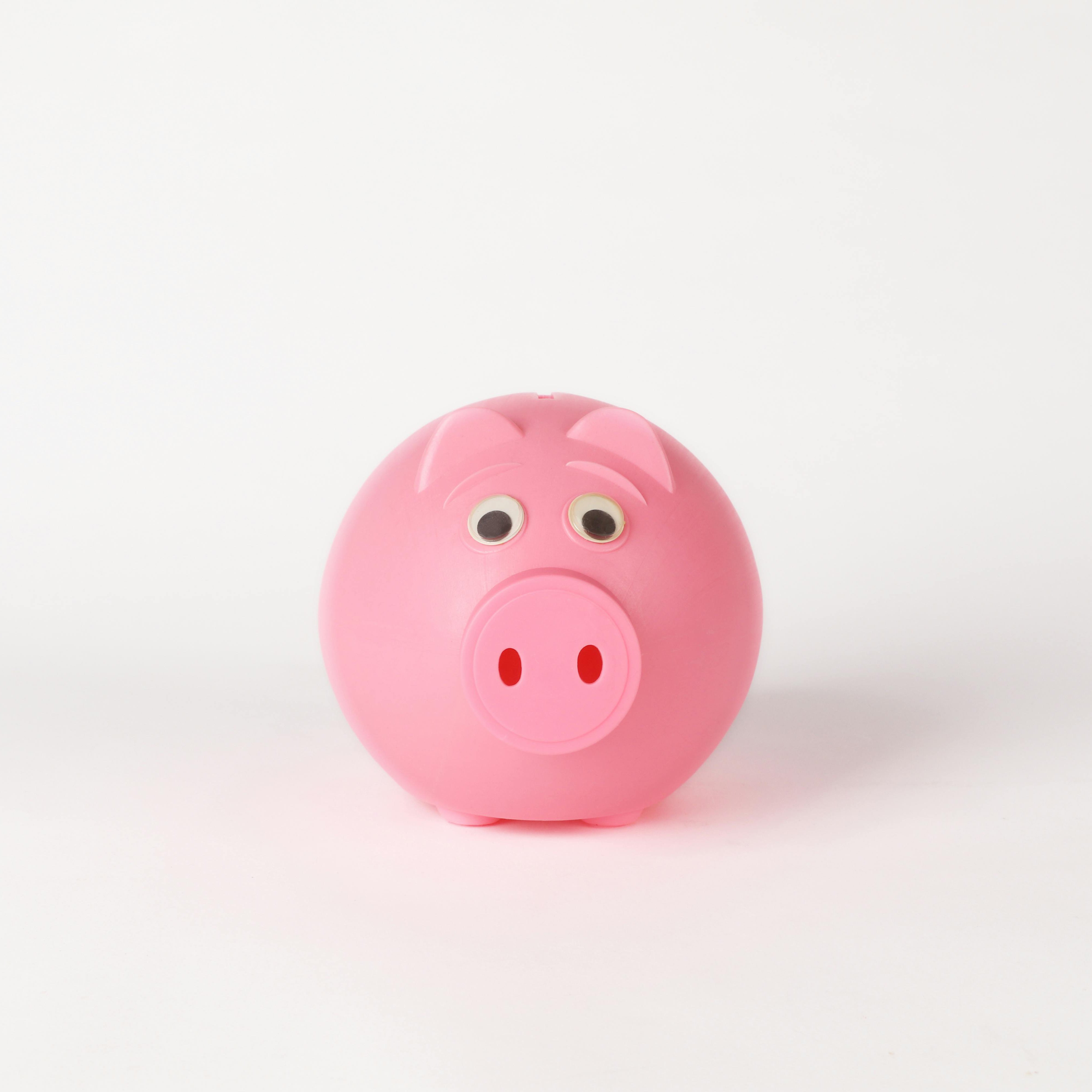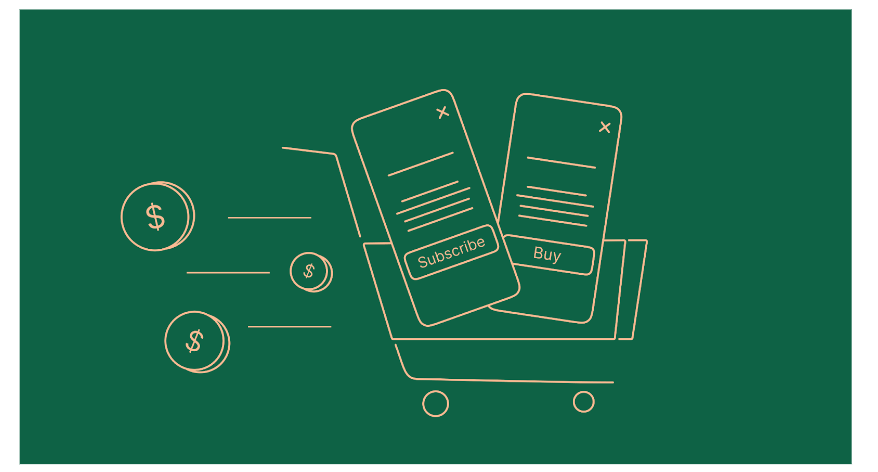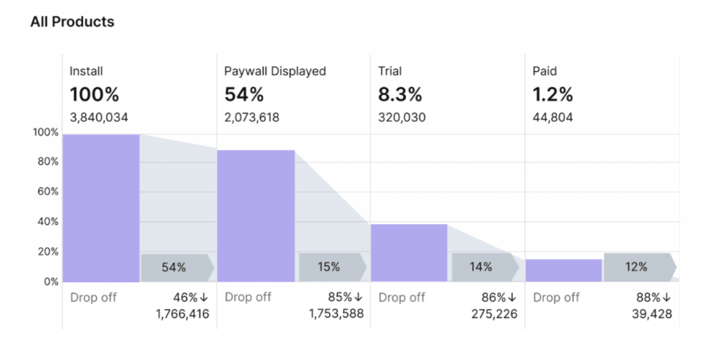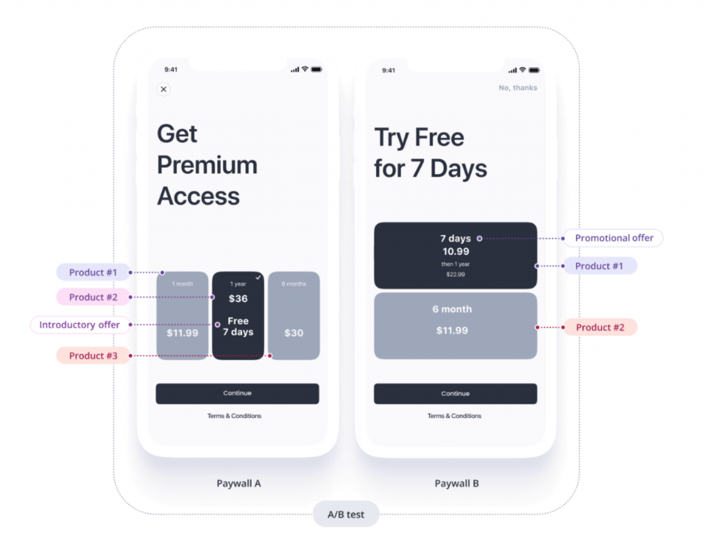7 Ways App Developers Leave You Vulnerable to Security Threats
Not many days go by without news of a hacking incident of one sort or another. Cyber threats have become so common that we’re almost numb to them —...
8 min read
Written by Dan Gower, Nov 1, 2023

So you’ve built a beautiful app, congratulations! But, great design only goes so far. If you don’t have a strategy to monetize your app, it’s hard to make any money. Even the most elegant apps are subject to financial failure without a successful business model.
By understanding trends in the marketplace, you can set your app up for financial success. We’ll run through the state-of-the-app industry and revenue basics. Then we’ll delve into the 6 most effective strategies to monetize your app.
Over the past 5 years, there has been a significant shift in the ratio of free vs. paid iOS apps available to download. In 2019, around 10% of all iOS apps required payment to download. By 2023, that number was halved, with paid apps making up 5.5% of the entire market. (Source: Statista)
Before development, many companies consider these marketplace trends. They conduct comparative research designed to optimize monetization. Even post-launch, generating new revenue streams often provides a competitive advantage.
Understanding the marketplace allows you to identify possible streams of revenue. Consider a strategy that leverages your app’s functionality and target customers. Then, model how those various streams interact and establish a sustainable business model.

A revenue stream is a particular means by which a company or individual generates revenue on an ongoing basis. An app can have a single stream of revenue, but some of the most successful businesses will have numerous revenue streams aligned with different ways of creating value.
A revenue model considers the ways in which multiple revenue streams interact, and how a company manages its resources to sustain these methods of monetization. For example, you may attempt to optimize one revenue stream within an app to benefit the development of another. Or, based on the customer’s buying journey, different offerings may be released over time or bundled.
A business model is the vision for your app’s future growth. Strong business models incorporate an app’s revenue model and how those monetization systems interact with all the other assets, resources, and processes. It considers all factors, such as targeted traffic, customer acquisition, user retention, and monetization, to form a plan for financial sustainability and success.
Apps that fail to establish a monetization strategy are known as “zombie apps.” No – they won’t eat your brains, but they might make it hurt. These apps are often abandoned Due to ineffective or nonexistent revenue streams. Left to linger in the app store, they go unsupported with no updates over the course of several years. As a result, they normally end up full of apps and glitches. The App Store actually warns potential customers prior to downloading them.
Don’t want to be a zombie app? Understand the marketplace. Develop a coherent business model. Optimize growth. Maintaining multiple, healthy streams of revenue can sustain your app for years after launch.
You’ve done your homework: you understand your target audience, you know your competition, and you’ve developed a unique app concept. The puzzle pieces are starting to fall into place, and now you just need the financial component. These are the six most effective strategies you can use to monetize your app (and when to use each).

Now that we know that most available apps are free to download, one of the most common ways to monetize a “free” app is through in-app display ads.
This strategy allows an app to cultivate a wide audience because there’s no monetary barrier to entry. If your app captures enough users, its high level of visibility becomes valuable to advertisers.
Free Apps that host in-app advertising, focus less on selling the app to the user and more on leveraging the traffic (and data) to outside companies looking to advertise.
In-app ads may disrupt the user experience. App design can feel clunky if an ad consumes a significant percentage of limited screen space, or full-screen ads that appear between actions might slow functionality. And some even, in the case of Reddit and Twitter ads, get ignored altogether.
Apps that capture a large audience are well-suited for in-app advertising. Social networks and mobile games are also big market segments because users tend to spend a lot of time in these spaces. If you choose to monetize with in-app advertising, consider optimizing for session duration so you can capitalize on more opportunities to offer ads to your audience.
Freemium apps offer a limited experience of the app for free, indefinitely. The full range of features is only accessible on the app after a payment has been made.
The freemium model gives users a taste of the full app, by giving access to the benefits of basic functionality, while leaving advanced capabilities behind a paywall.
It’s the same concept of sampling, and provides potential paid customers the ability to “try before they buy.”
This is especially effective for apps with sophisticated technology. The free version acts as a demonstration of the app’s capabilities, without giving away the power of the full experience. Users impressed with the main functionality are primed for conversion from free to premium.

If your app has a number of valuable features, you are well-positioned for a freemium model. Ideally, you want to be able to test which features you release for free, and which to keep behind the paywall. Running these tests requires a high volume of traffic. It might be difficult for apps serving niche markets to run these tests and figure out which features will trigger user conversions from free to premium.
Mobile games tend to do well with freemium models. By keeping some of the content locked, they can collect payment to unlock those features later. Users invest time into playing a game before learning what features are unavailable, and are therefore more likely to invest in the premium, paid content.
It’s not hard to figure out how you monetize a paid app. This might be the simplest approach. The user pays money to download the app to their device, and that’s that. Paid app users can enjoy the full functionality and an uninterrupted ad-free user experience. By establishing a paywall upfront, you eliminate free users clogging up server space contributing to smoother UX.
Users cannot try an app before purchasing. You may have to spend more on marketing campaigns designed to showcase your app to the target audience. You might also be competing against other apps in your category that do offer free versions.
Many paid apps choose to make video content posted to websites and social accounts that explain the app’s functionality and provide user demonstrations.
Paid apps are great for serving niche markets that are historically overlooked or underserved. Users are more likely to pay up-front for a specific function if demand for that service is high.
Paid apps generally do better when it’s the kind of app users expect to pay for. It used to be that iPhone users expected to pay for apps, while Android users expected to get apps for free. This expectation has evolved now, so you’ll have to take a more granular look at your user personas instead of dividing by iOS and Android.
Many apps provide users with the ability to buy virtual assets and physical goods, or opt-in to specific premium features through in-app purchases [IAPs].
Typically free to download, almost all m-commerce apps work this way. Users can buy different goods directly from the brand. Frank + Oak is a good example of a company that offers a branded app for buying clothes, shoes, accessories, and more.
Can’t buy love? Well… kind of. In-app purchasing has revolutionized online dating. Users can opt in to paid features on dating apps. They can boost profile visibility or unlock time-saving tools… for a small fee. Developers understand that there is an incentive to pay for convenience – especially in the pursuit of love.
Yet again, mobile games champion the in-app purchase strategy. Mobile gamers will pay for immediate access to competitive advantages (like powerful weapons, stronger armor, increased health – even magic powers). However, there is a limit to how heavily a game developer can rely on paid power-ups. Many players are wary of downloading games with a reputation of being too difficult without those additional purchases.
In-app purchases are a highly reliable revenue stream for monetizing almost any kind of app. Establishing the price points of various paid goods, features, and services may take some testing, but this model is generally very effective. The only limitation to in-app purchasing would be a lack of general resources, insufficient time devoted to establishing price points, or very low traffic.
Subscription-based apps charge for providing high-quality content or premium services that users value enough to pay for on a regular basis. Many subscription-based companies adopt a freemium approach. The app is free to download and allows users to sample the content before requiring them to subscribe.
Think about your favorite streaming service. You know Netflix, Hulu, HBO (now MAX). They offer 14-day free trials of premium content to new users up-front. After the trial period has ended, many (most) will auto-subscribe new users to their monthly paid service. For a renewing fee charged each month, subscribers can access their content.
Subscription services are great revenue because the customer is charged continuously for the service even if they are not an active user. Once the subscription is in place, developers or content creators must ensure their content is engaging enough to justify ongoing payments from their active users.
The recurring revenue of subscription-based apps is very appealing, however, the business model must allocate sufficient resources devoted to continuously creating high-value content and services to justify this model.
As app development has become increasingly sophisticated, many are designed to incorporate a blend of multiple revenue streams or models.
A common blended model could look something like this: an app that is free to download but features in-app advertisements. Users can remove the ads by paying for a monthly subscription to an ad-free version of the service. For an additional revenue stream, this ad-free subscription-based app now provides opportunities for additional in-app purchases.
The perfect example of a blended model? Spotify. Users can download Spotify for free and experience full functionality, but will be subject to hearing the occasional ad. For users who pay a subscription-based fee, the ads are removed for uninterrupted Spotify listening. But, Spotify also displays merchandise directly on an artist’s page, so fans can make these additional purchases directly in the Spotify app. Spotify also converts ticket sales by alerting the “top listeners” to special events and concerts featuring their favorite artists.
By incorporating diverse sources of revenue into the monetization strategy of an app, businesses become sustainable over time. If one strategy is slow, other streams can keep them afloat, leading to more resources, the ability to invest in opportunities for even further growth, and an app built for marketplace success.
The only way to find what will work for your app is research – and a lot of it. Many aspiring developers don’t have the in-house resources to allocate for the level of market research and testing required to devise the optimal monetization strategy.
Using a solution like Adapty is one way to leverage competitive research, data-based solutions, A/B testing, and paywall optimization. This can help developers make informed decisions. Apps often double their subscription revenue and run faster, less expensive testing when using this tool.

Early (or pre) development is when most consider building revenue streams. You can most naturally implement multiple monetization channels into the design and functionality of your app, without having to backtrack. You won’t lose development progress or release significant updates that might interfere with existing UX. However, if you build a large and dedicated user base, you can always find ways to monetize it.
Designli specializes in building apps that solve important problems for the user. Our team has experts in a variety of development stacks, with years of experience advising on the best fit for your business model.
When building and monetizing a mobile app (ar any piece of software), our first task is to analyze your business requirements and determine the best tech stack we can bring to the table. We’ll combine that analysis with best practices for navigating a competitive app landscape.
Whether you’re developing from the ground up, or re-tooling your app’s monetization strategies, the Designli team can help you optimize for sustainable growth. Reach out and let us know how we can help.
Subscribe to our newsletter.

Not many days go by without news of a hacking incident of one sort or another. Cyber threats have become so common that we’re almost numb to them —...

Mobile application security development is one of the fastest growing sectors of the cyber security industry—and with good reason. It’s hard to go a...

Web applications power today’s businesses. From productivity software to marketing and customer service tools, web apps let us get work done quickly...